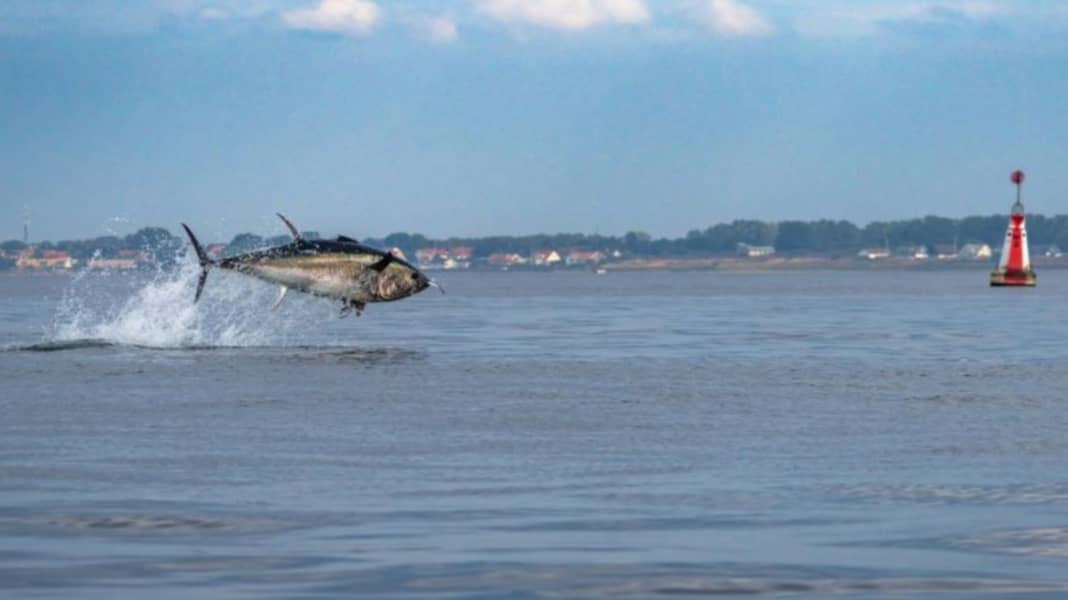
The Atlantic tuna had disappeared from Danish-Swedish waters for over 50 years until it was observed again for the first time in the Øresund in 2017. In recent years, the stock has grown continuously, creating a real hype around the big hunter since 2022.
"I honestly didn't think it could get any crazier than last year, but sometimes you wonder 'Am I really in Denmark? Most people think I'm crazy when I tell them that several hundred tuna are currently jumping out of the water in the Sound. Nowhere else in the world do tuna jump as much as in the Øresund, which may be due to the funnel-shaped bottom and the strong currents," says Jens Peder Jeppesen, marine biologist and director of the Øresund Aquarium.
According to Jeppesen, part of the reason for the return of bluefin tuna to the Øresund is that the tuna has recovered well in the North Atlantic. There have been very strict restrictions on commercial tuna fishing for many years and therefore reason to believe that the stock will continue to increase if the restrictions remain in place.
Tuna-Watching
Although catching the fish, which normally weigh 200-400 kilograms, is prohibited in the Sound, the Øresund Aquarium offers Tuna-watching tours to watch the animals hunting. Another reason why tuna thrive in the Øresund is that there are large quantities of mackerel, herring and garfish. All tasty treats for the Atlantic hunters. And the sound acts like a funnel through which these fish have to pass - a perfect hunting ground for the tuna.
"Of course, we can't guarantee that everyone on board will see a jumping tuna, but the chances are good. Last year we had a success rate of around 70 per cent, which is pretty unique. The tuna doesn't have to gasp for air like porpoises or dolphins, but only jumps close to the surface due to its special hunting behaviour, where the prey fish are terrified," says the enthusiastic aquarium manager.
Tips from the aquarium manager for going on a tuna safari with your own boat
There are areas in the Øresund where tuna are seen more frequently and where the fish like to hunt at the surface. These areas are often found along the entire Swedish side of the Øresund and especially in the shipping lanes on both the Danish side to the south and the Swedish side to the north. Another good spot is the narrowest part of the funnel between Helsingør and Helsingborg, where the tuna like to hunt mackerel and herring. A third top spot is between the wooded area east of Hornbæk harbour and the last buoys of the traffic separation scheme towards Kattegat and finally in the area of the Svinbådan lighthouse on the Swedish side. The most important thing when observing tuna is to look out for the large white splashes, which can be seen for a good nautical mile when the conditions are right, i.e. in calm weather without wind and waves.
"Tuna form a few patches of foam in the water when they have jumped, presumably because protein has been torn from the surface. That's what I look out for. There is also another type of 'calm' patch that they create on the surface, similar to the big whales when they dive, but here they are created when they plough the surface with their powerful tail fins in search of fish," explains Jens Peder Jeppesen.
The best months to observe the large fish, which can travel at speeds of up to 80 kilometres per hour, are August, September and October. The best chances of success are in the early morning and evening when the weather is calm.
